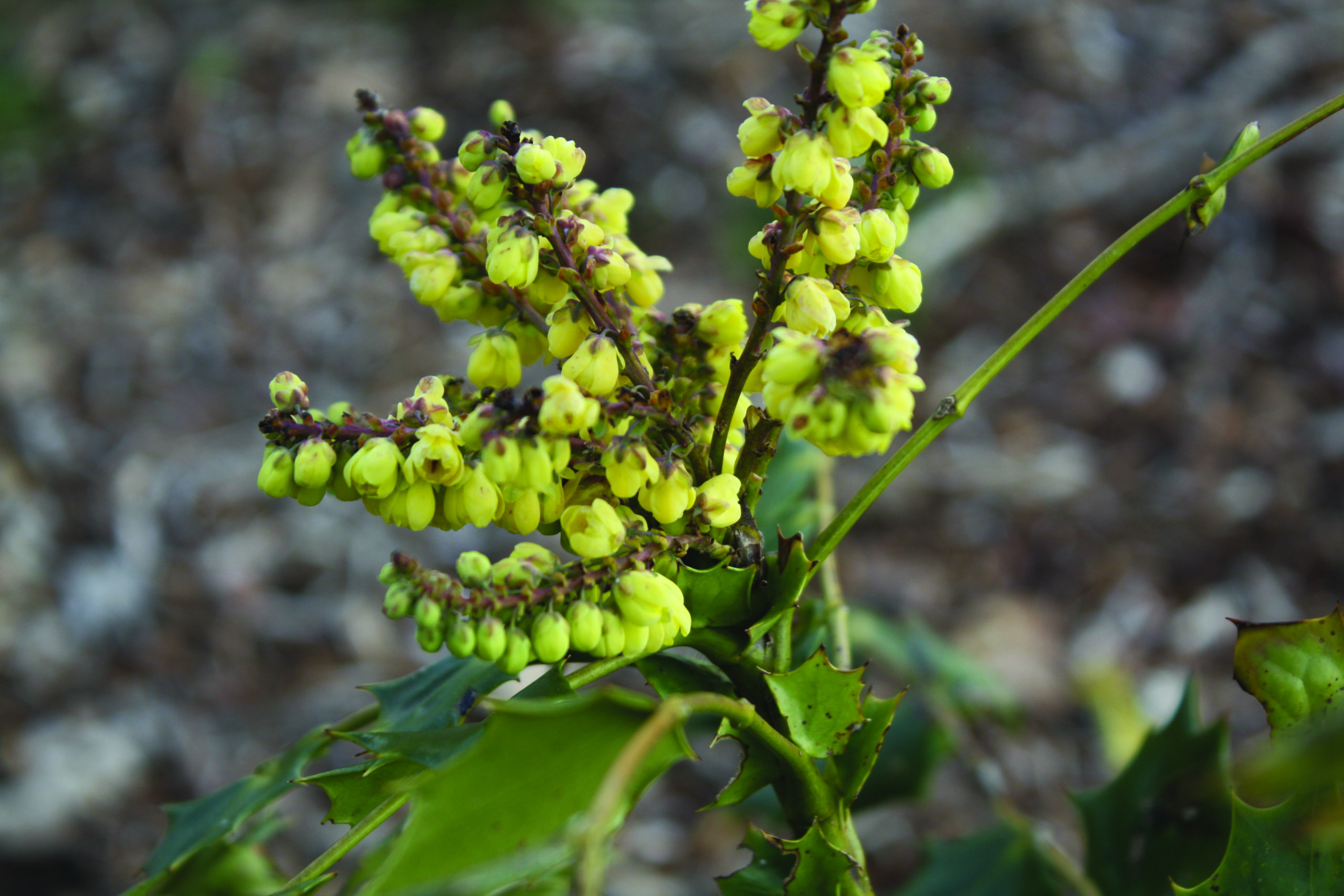
The Oregon Grape Holly’s bright yellow gold flowers are lined up along arching 2-3 inch stems, and the stems are arranged like a bright star that perches on top of each branch. (Photo by Virginia Rosenkranz)
March is the beginning of spring when the sun crosses the equator and the earth begins to tilt toward the sun.
The days get warmer and the earliest bulbs begin to bloom. Some plants just can’t wait that long, like our native Oregon Grape Holly, Mahonia aquifolium.
Although this native calls the Pacific Northwest its home, it thrives on the Eastern Shore and begins to bloom in the winter and is in full bloom by April.
The bright yellow gold flowers are lined up along arching 2-3-inch stems, and the stems are arranged like a bright star that perches on top of each branch.
Not only are the colorful yellow flowers lovely, they are also mildly fragrant and attract many of the early pollinators to visit them.
The flowers mature into edible clusters of blue-black, grape like berries that the native birds seem to realize that they are ripe before we do.
If you do get lucky enough to harvest the berries, they taste best made into jam or jelly.
These evergreen plants prefer to grow in shade but if kept watered will thrive in full sun as well.
They like moist but well drained acidic soils that are very common on our Eastern Shore which allows them to grow 3-6 feet tall and wide.
Like a lot of native plants, the roots of the Oregon Grape Holly can form suckers that creates colonies of the plants, but cautious pruning out of the new suckers will keep the plants more collected.
The dark green glossy evergreen leaves can begin with a burgundy tint, and many cultivars will turn a burgundy-bronze in the cold of winter.
The 6-12 inch leaves are formed from 13 holly shaped leaflets, six on each side of the midrib and a single leaflet on top.
There are a few very nice cultivars that showcase the flowers well including “Golden Abundance” and “King’s Ransom.”
A new cultivar, Soft Caress has narrow, delicate, feathery leaflets that are soft to the touch, bright yellow flowers and only grows 4 feet tall and wide.
Small gardens to large shady gardens can shine brightly in early spring with one of these lovely cultivars of the Oregon Grape Holly.
(Editor’s Note: Ginny Rosenkranz is a commercial horticulture specialist with the University of Maryland Extension.)



